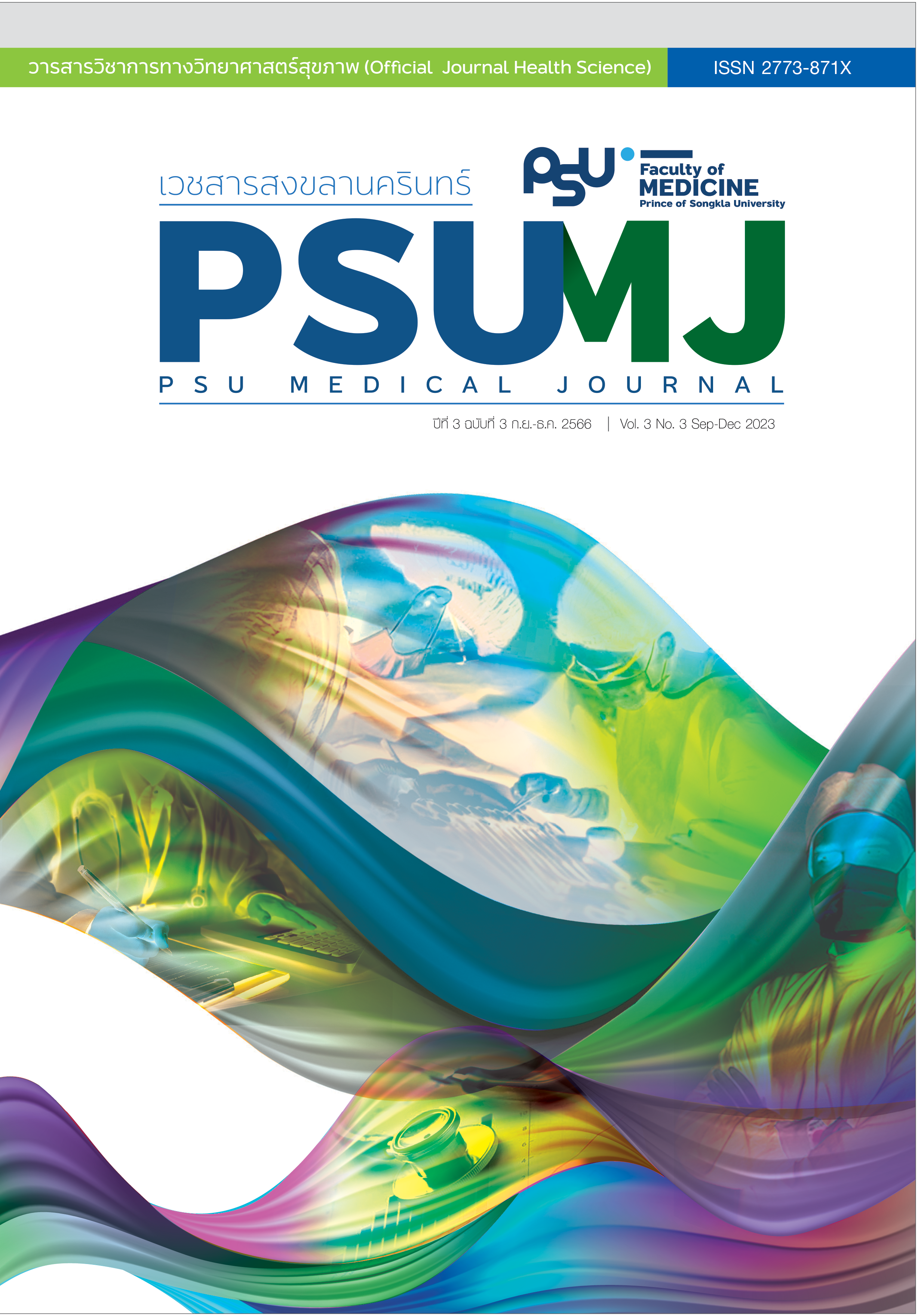Anatomical Variations of The Diaphragma Sellae and Pituitary Stalk in Human Adult Cadavers in Myanmar
DOI:
https://doi.org/10.31584/psumj.2023258100Keywords:
anatomical variation, diaphragma sellae, human adult, Myanmar, pituitary stalkAbstract
Objective: The middle cerebral fossa contains the sellar area. The diaphragma sellae, a dural fold, covers the sella turcica, which is located in the bony depression of the sphenoid bone. One of the most significant endocrine glands in the body, the pituitary gland’s stalk protrudes from the base of the brain through the diaphragma sellae’s primary hole.
Material and Methods: This study was a cross-sectional experimental study and carried out on 30 human adult cadavers (20 males and 10 females) in order to describe the anatomical variations of diaphragma sellae and pituitary stalk.
Results: The shapes of the diaphragma sellae were 17 flat types (56.7%), 12 concave types (40%) and 1 convex type (3.3%). The shapes of the central opening of the diaphragma sellae were 21 round types (70%), 5 coronal elliptical types (16.7%), and 4 sagittal elliptical types (13.3%). The mean anteroposterior diameter of the central opening of the diaphragma sellae was 6.92±1.47 mm and the transverse diameter was 7.06±1.46 mm. The mean anteroposterior diameter of the pituitary stalk was 1.83±0.41 mm and the transverse diameter of the pituitary stalk was 2.00±0.33 mm. The locations of the pituitary stalk were 20 posterior types (66.7%), 5 central types (16.7%), and 5 anterior types (16.7%).
Conclusion: Neurosurgeons, maxillofacial surgeons, and clinical radiologists may find the current study of the diphragama sellae and sellar region helpful in contemplating the diseases and operational techniques in this area.
References
Velichety SD, Baburao S. Age and sex related morphology and morphometry of sellar region of sphenoid in prenatal and postnatal human cadavers. Int J Res Dev Health 2013;1:141-8.
Sinnatamby CS. Last’s anatomy: regional and applied, 12th edn. Ann R Coll Surg Engl 2013;95:230.
Ju KS, Bae HG, Park HK, Chang JC, Choi SK, Sim KB. Morphometric study of the Korean adult pituitary glands and the diaphragma sellae. J Korean Neurosurg Soc 2010;47:42.
Sage M, Blumbergs P, Mulligan B, Fowler G. The diaphragma sellae: its relationship to the configuration of the pituitary gland. Radiology 1982;145:703-8.
Gulsen S, Dinc AH, Unal M, Cantürk N, Altinors N. Characterization of the anatomic location of the pituitary stalk and its relationship to the dorsum sellae, tuberculum sellae and chiasmatic cistern. J Korean Neurosurg Soc 2010;47:169.
Rahman M, Ara S, Afroz H, Nahar N, Sultana AA, Fatema K. Morphometric Study of the Human Pituitary Gland. Bangladesh J Anat 2013;9:79-83.
Gulsen S, Dinc AH, Unal M, Cantürk N, Altinors N. Characterization of the anatomic location of the pituitary stalk and its relationship to the dorsum sellae, tuberculum sellae and chiasmatic cistern. J Korean Neurosurg Soc 2010;47:169-73.
Ongeti K, El-Busaidy H, Fundi N. Reappraisal Of The Dimensions Of The Diaphragma Sellae. Anat J Africa 2012;1:24-7.
Jin L, Q. S., FAN Jun, SHI Jin, LU Yuntao, Xiao-rong Y. Anatomic features of diaphragma sellae and its clinic implications. Chinese J Clin Anat 2013;31:123-6.
Sakran A, Khan MA, Altaf FMN, Faragalla HEH, Mustafa A, Hijazi MM, et al. A morphometric study of the sella turcica; gender effect. Int J Anat Res 2015;3:927-34.
Ju KS, Bae HG, Park HK, Chang JC, Choi SK, Sim KB. Morphometric study of the korean adult pituitary glands and the diaphragma sellae. J Korean Neurosurg Soc 2010;47:42-7.
Rhoton AL Jr. The sellar region. Neurosurgery 2002;51:S335-74.
Campero A, Martins C, Yasuda A, Rhoton AL, Jr. Microsurgical anatomy of the diaphragma sellae and its role in directing the pattern of growth of pituitary adenomas. Neurosurgery 2008;62:717-23.
Kursat E, Yilmazlar S, Aker S, Aksoy K, Oygucu H. Comparison of lateral and superior walls of the pituitary fossa with clinical emphasis on pituitary adenoma extension: cadaveric-anatomic study. Neurosurg Rev 2008;31:91-8.
Won HS, Han SH, Oh CS, Lee JI, Chung IH, Kim SH. Topographic variations of the optic chiasm and the foramen diaphragma sellae. Surg Radiol Anat 2010;32:653-7.
Yohannan DG, Krishnapillai R, Suresh R, Ramnarayan S. A Morphometric Study of the Foramen of Diaphragma Sellae and Delineation of Its Relation to Optic Neural Pathways through Computer Aided Superimposition. Anat Res Int 2015;2015:618042.
Downloads
Published
How to Cite
Issue
Section
License
Copyright (c) 2023 Author and Journal

This work is licensed under a Creative Commons Attribution-NonCommercial-NoDerivatives 4.0 International License.








